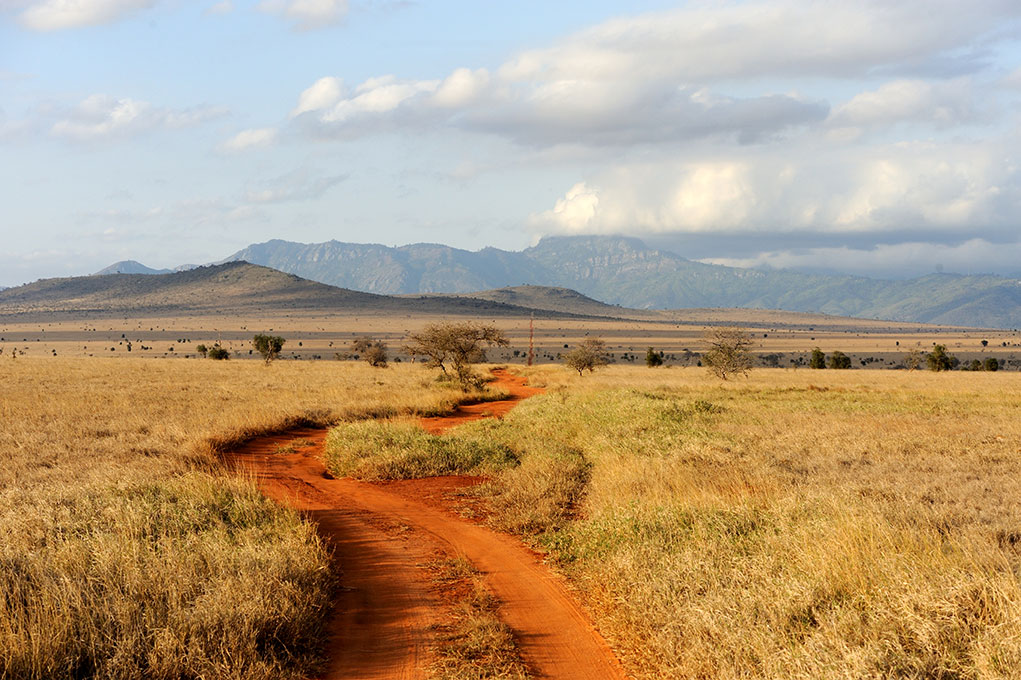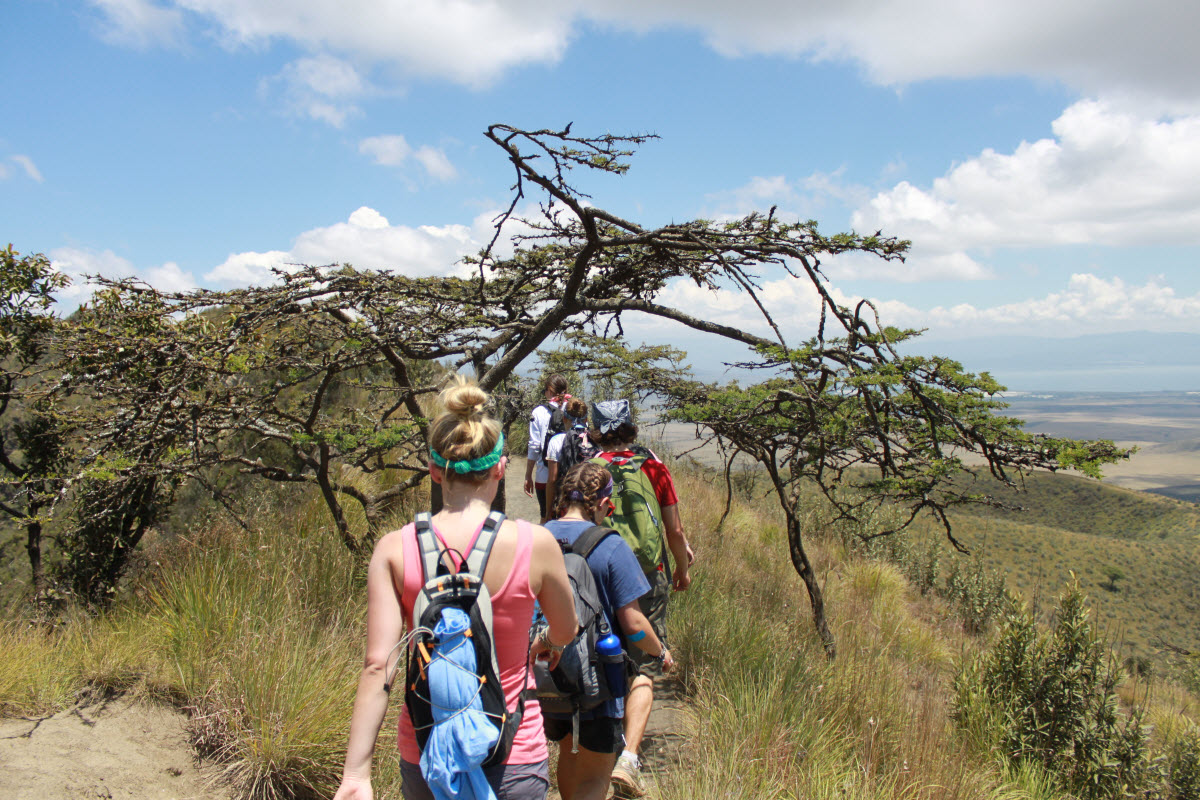Kenya is a jewel embedded in East Africa. It is a country abundant in some of the world’s most majestic natural wonders. Think of spectacular mountain ranges, extraordinary rift valleys, hot springs, wildlife parks and even beaches! The country’s diverse landscapes are unlike any place in the world, and it’s a destination where one can find both relaxation, thrill and of course, wildlife!
East Africa Is Home To Rich & Vibrant Wildlife
There is no better place in the world to experience and see the famous African animals than in East Africa and Kenya in particular. Our welcoming national parks and game reserves are teeming with wild animals and some of the most stunning views.
East Africa is the Safari wonderland. There is a good chance that you already know of many of these creatures from watching The Lion King and other African wildlife documentaries. An African safari allows you to get close to these wild African animals and to be awestruck by their majestic nature and beauty.
Top 20 Animals You’ll Experience On A Safari
Here is a list of some of the must-see African Animals and where you can see them when on a Kenyan safari.
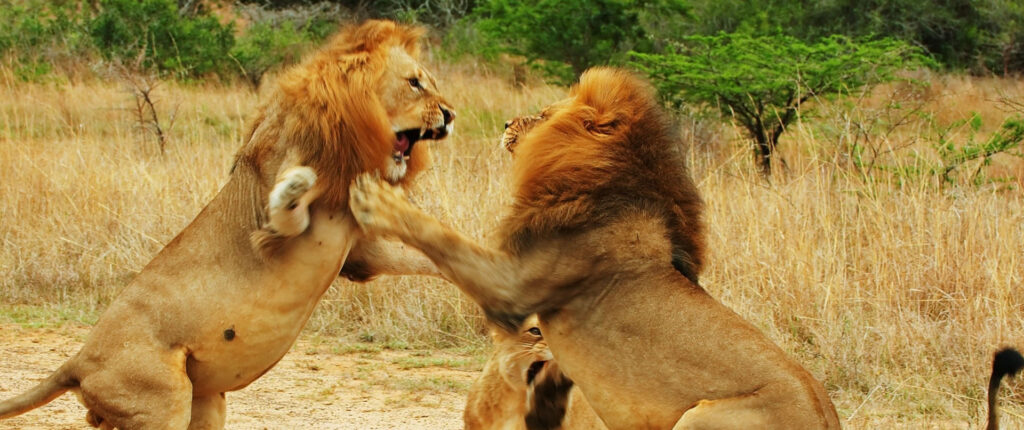
1. African Lion
The African lion is well known for being the “king of the jungle”. The Masai people refer to them as a shy animal. They typically are brownish-yellow, and the males have thick black or brown manes. The manes serve to protect them while they are fighting. Lions are the only social type of cats, living in pride that consists mainly of young males and females that are related. They prey on a wide variety of creatures, including zebras, wildebeests, warthogs, buffalo, antelope and when they gang up they can bring down giraffes and elephants. The female lions are good hunters. A lion can kill 15 to 20 large animals each year. Most of the other time they will still kill from leopard and cheaters and other hunters.
2. African Elephant
An African elephant is one of the largest types of African animal you will see when on an African safari.
African elephants live in tight-knit matriarchal groups of related females, known as a herd. They are extremely intelligent, protective and have excellent memories. The do not forget!
Elephants even are said to be able to communicate with one another over long distances. Their diet consists of bamboo, grasses, bark, roots, and leaves. Rogue African elephants are known to raid farms and they can eat crops such as sugarcane, cabbage, maize, and bananas. Due to their size, they can eat between 300 and 400 pounds of vegetation every day. If you would like to interact with these African animals, elephants, you can visit the Elephant Orphanage managed by The David Sheldrick Wildlife Trust. You will appreciate every second spent with the animals here. Plan to donate to the cause while there. These African animals are on two main subspecies, which live in the forest and savannah.
3. Kenyan Cheetah / Tanzanian Cheetah
The cheetah is said to be the fastest land animal throughout the world. Kenya has the largest population of the Eastern African cheetahs. Many tourists on an African safari have been lucky to witness a cheetah hunt. The adrenaline rush when experiencing this is unexplainable.
Kenyan Cheetahs have a long-legged body that is slender. They tend to be smaller than other types of cats and have distinctive “tear stripes” stretching from a corner of the eye to the side of the nose.
Cheetahs are more in the evenings just after sunset. They try to avoid hot temperatures. The Kenyan cheetah is hunters of eating smaller hoofed animals like impalas, gazelles and wildebeest calves.
They tend to live on their own, besides young brothers from the same litter, who will live together for a short while.
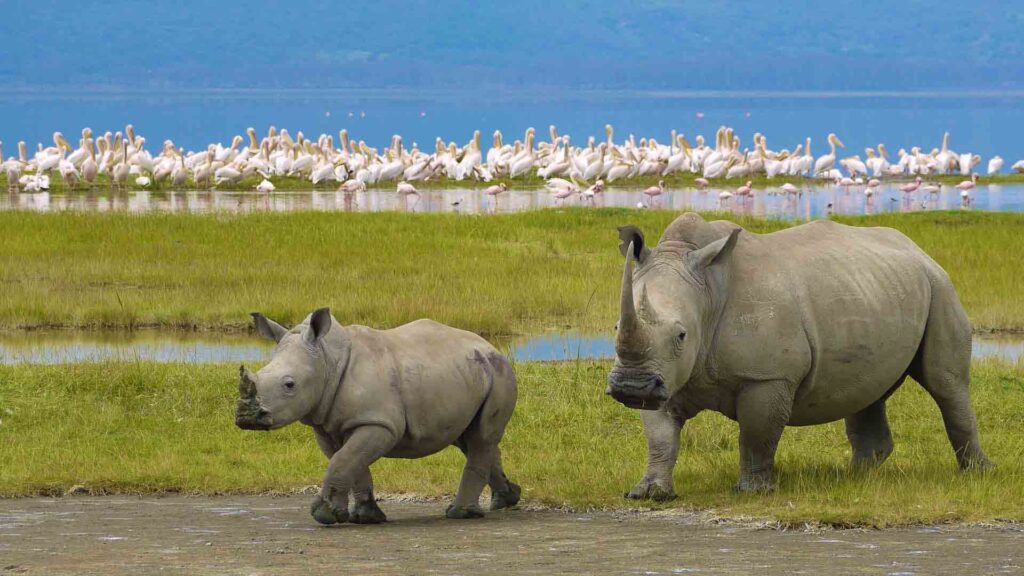
4. Rhino
The Rhinoceros (Rhino) is the largest land mammal besides the elephant. Two of the five species are African, known as the black and white rhinoceroses. All members of the two species have two horns.
They use their horns during mating and fighting, as well as when defending themselves from lions and other predators. This animal is a herbivore, eating foliage from bushes and trees, as well as grazing on grass. Poaching and habitat loss have affected the numbers of rhinos in Africa. However, conservancies like the Ol Pejeta are doing a great job at making sure the numbers of rhinos are growing.
5. Cape Buffalo
African buffaloes are one of the most abundant of the large herbivores in Africa. They can weigh up to 1,500 pounds. They live on the savannas and in the forests of Africa.
They are cow-like in their appearance and come in different colors and types of horns. The males use their horns to help them fight for dominance. They live in herds that number in the hundreds or thousands. Females and their offspring make up one type of herd, while dominant adult males often guard the herd. During the dry seasons, males split from the herd and form bachelor groups.
These African animals are heavy grazers and need a large amount of green vegetation to survive. They are known to even swim across rivers in search of good grazing grounds. They are very temperamental and they are known to attack without provocation. So when on an African safari, keep your distance with this African animal. Buffaloes are known to spoil lion’s hunts and when they gang up they can easily inflict major injuries or kill a lion.
6. Masai ostrich
The ostrich is one of the only flightless birds. They have extremely powerful legs that they use for running, as well as for kicking when they cannot get away.
Ostriches spread out their wings in order to show off to potential mates. The ostrich lives alone with one other ostrich. It is easy to spot a male and a female in the wild. The male is Dark and the female is Grey. Their eggs are the largest of any living bird. All the hens within the herd put their eggs in the dominant hen’s nest. Ostriches are farmed throughout the world, though they are native to Africa.
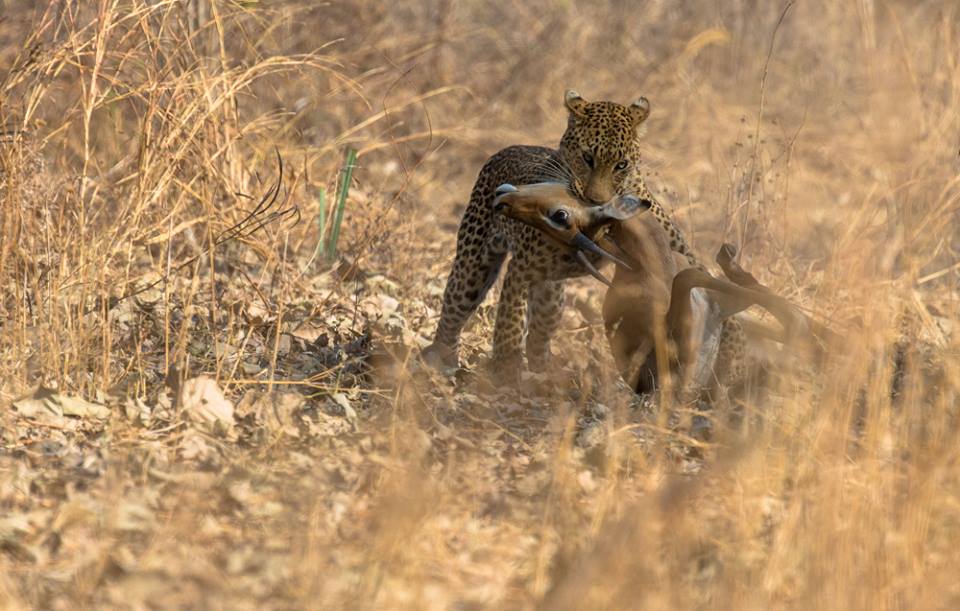
7. African Leopard
Leopards are large cats, though they are the smallest out of all the big cats. Females are between 46 and 132 pounds, and males are between 80 and 165 pounds. They are solitary, only together when they are raising their young.They have hunting methods that are both ferocious and graceful. Leopards are nocturnal, hunting at night for, antelopes, waterbuck, young zebras, warthog and wildebeest, large birds, monkeys, and rodents, among other things. This African animal has an acute sense of hearing and vision for hunting. A huge number of African Leopard are found in the Sub-Sahara region. They are adaptable, living in all types of climates.
8. Wild Dogs
African wild dogs are incredibly social creatures, living in packs of between 6 and 20 dogs. There is a dominant breeding pair among them. No two dogs are found with the same markings on them.
They have different vocalizations, touch and movements to communicate with one another. Wild dogs are carnivores, and the puppies are given priority during a kill. The whole pack shares responsibility when it comes to protecting the puppies. Wild dogs are found in Sub-Saharan Africa.
9. Zebras
Zebras are native to Africa and are related to donkeys and horses. They have distinctive brown or black patterns on their coats. You may be interested to learn that this design comes from the fact that they have black skin under their white coats. These African animals use an intriguing way of communicating through their body language, such as baring their teeth or widening their eyes. Also, they have specific means of braying, huffing, and snorting. Zebras eat twigs, leaves, and grass. They are favorite prey for lions and other big cats, however, a kick from a Zebra can kill a lion. In Kenya, zebras can be spotted in large in all the parks.

10. Giraffes
Giraffes are the world’s tallest living land animals. They are known for their long necks, but their legs alone can be over 6 feet, taller than the average person. Scientists have recently discovered that there are 4 species of giraffes, as well as 5 subspecies. Though giraffes have distinctly spotted coats, no two giraffes have the same pattern. You will encounter giraffes on safari in large herds, as females travel with their young. The males travel together to look for mates. As vegetarians, giraffes reside in Africa’s plains, grasslands, and savannas. Most giraffes live in south-east Africa. The Masai giraffe specifically can be found in Kenya National Parks.
11. Hippo
The hippopotamus is a large, water-loving animal that is native to Africa. Though they are seen as being cute, they can be quite dangerous. They are the third-largest land mammal. For this reason, hippos eat a lot – around 80 pounds each day. They like to hunt for food at night, including a wide variety of fruits. In order to survive, they need to be in areas in which there is an abundance of water. You can view hippos at the private wildlife conservancy, Hippo Point.
12. Thomson’s Gazelle
The Thomson’s Gazelle is a gorgeous, graceful type of antelope. The gazelles have ringed and curved horns and light body frames that make them agile at running and jumping to get away from predators. They are in the same family as cattle, sheep, and goats. The Thomson’s Gazelle is considered to be one of the smaller species, weighing between 26 and 165 pounds. They are herbivores, mostly eating leaves, shoots, and grass. The majority of gazelles live in the deserts and savannas of Africa, including the Serengeti region of Kenya.
13. Warthog
When you see a warthog on a Kenya safari, you may think it is bald at first. In reality, these wild pigs are actually covered in bristly hairs, with a distinct crest and very hairy tails and cheeks. Their 4-tusked heads make them look like fierce predators, but they often avoid fighting enemies and hide in dens that have been abandoned by aardvarks. They are mostly herbivores, though they are known to occasionally dine on small animals they come across in their travels. You are very likely to see several warthogs on your trip, as they are extremely common. This includes in the Maasai Mara National Reserve.
14. Topis
The topi is a medium-sized antelope that is between 150 and 340 pounds. They are incredibly fast, reaching speeds up to 43 mph when they become frightened. Topis tend to be quite active, specifically in the early morning and during the evening. They live in closed herds (the males are territorial over the females). They are herbivores that mostly eat grass. There are 7 species that have been found.
Topics usually live on the savanna and seasonally flooded grasslands. You can also see them at the Maasai Mara National Reserve.

15. Wildebeest
Wildebeest, otherwise known as gnus, are African antelopes that are quite large. They are related to sheep, goats, and cattle. They have bushy beards, manes, and curved horns. When they gather in a group, it is known as a herd. The common wildebeest is between 260 and 595 pounds and is considered to be the largest type of antelope. They are herbivores and eat mainly grass and leaves. You will find the wildebeest specifically in eastern and southern Africa, between Namibia and Kenya. While in Kenya, you will be able to see wildebeest in Nairobi. The wildebeest travel in their hefty numbers throughout Kenya and Tanzania, as they form a large part of the natural spectacle; the great mammal migration. Wildebeest co-exist with Zebra and both frequent the menus of lions and other predators, making the migration the perfect place to spot nature in its purest and ‘cruelest’ form. Where to find them: Masai Mara National Reserve and Amboseli National Park
16. Baboons
Baboons are a type of old-world monkey, with the oldest known fossil being over 2 million years old. The sizes of baboons vary widely between the 5 species and can be as small as 30 lbs or as large as 80 lbs. There are 5 major species of baboons, and they live and travel in groups called “troops”. Baboons eat a lot, but they are not very picky. They eat plants and fruits as well as small animals. It may surprise you to learn that while baboons can climb trees, they do not have the gripping tail that many other monkeys do, and therefore spend most of their time on land. Baboons most often live in savanna and other semi-arid habitats, but you will occasionally see some in tropical forests. The hamadryas species of baboon lives almost exclusively in cliff areas. You can visit Amboseli National Park in Kenya and witness baboons in their natural habitat.
17. Crocodiles
Crocodiles are reptiles that are found in many regions throughout the world. There are 13 different species, all of which are different sizes. They can lay between 10 to 60 eggs at a time, and do not mature until they are at least 4 years old. These animals can weigh up to 2,000 pounds. They feed on meat, specifically fish, crustaceans, birds and frogs. African crocodiles are found in tropical areas. They are found in the Samburu National Reserve in Kenya.
18. Waterbuck
Though not necessarily the first animal that comes to mind when you set off on an African safari, spotting a Waterbuck can be a special treat. Seldom traveling solo, these large grey or brown antelopes are usually spotted in herds of up to 30. Male waterbuck has very impressive spiral horns that are up to 3 feet long and curve backward, then forward. The defassa waterbuck is classified as a “Near Threatened” species, so you are much more likely to see a common waterbuck. Waterbuck can dehydrate easily in hot climates, and they spend most of their time grazing on fresh grass. This severely limits their habitable area to savanna areas near lakes and rivers. They can be found in Nakuru Park in Kenya.
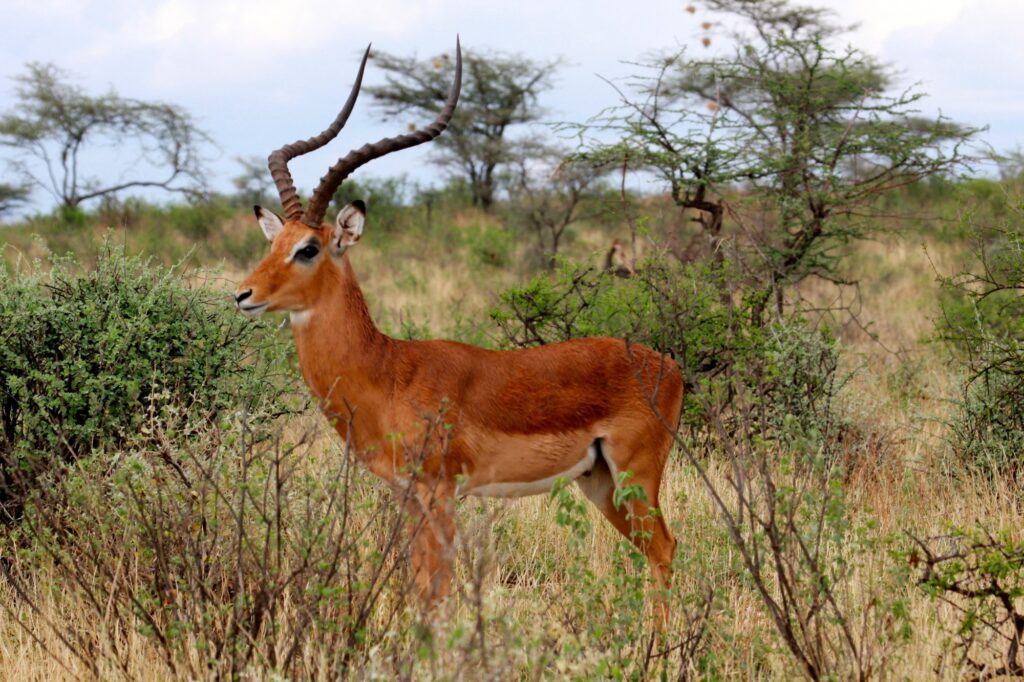
19. Antelopes
With over 91 species, the antelope is commonly sighted on an African safari. The general classification of antelope includes all members of the Bovidae family that are not cattle, sheep or goats. In general, they are more closely related to deer, but antelopes have permanent horns, while deer shed theirs annually. Both male and female antelopes have horns, though they vary from species to species and are generally larger on males. The eland, gazelle, steenbuck, waterbuck, and kudu are popular antelope you may see on your safari. You can see these herbivores on the African savannas, where they can munch to their heart’s content. See the antelopes that are located in the Kruger National Park on your next trip to Kenya.
20. Vultures
Vultures are medium to large-sized birds of prey. “Old World Vultures” are the ones that inhabit Africa. A group is called either a “venue” when it is on the ground, or a “kettle” when they are flying together. They have one mate per year and lay one egg each year. It has broad wings, long talons, and a sharp bill. They mainly eat the carrion of freshly killed animals. There are 8 different species of vulture in Africa. The white-backed vulture is related to the European Griffon. You can see them while visiting the Maasai Mara National Reserve.
What Safari Animals Are Top of your List?
You may want to experience your own unusual species sightings on safari. If so, contact us online. We’ll help plan your African wildlife adventure.



